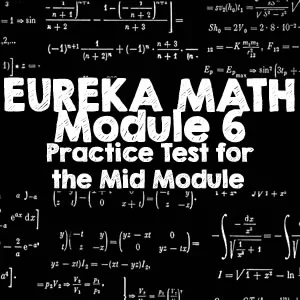Practice Test for the Mid Module 6 – Grade 2 Eureka Math
The Mid Module 6 Test covers Topic A and Topic B
In Eureka Math Grade 2 Module 6 shows Grade 3 students how to multiply and divide, as well as how numbers other than 1, 10, and 100 can be used as units.
The Mid Module 6 Test happens after Topic B Lesson 12. It covers standards 2.OA.A.1, 2.OA.C.4.
We have other related 2nd Grade Math worksheets for Operations and Algebraic Thinking here: https://edthings.com/2nd-grade-math-worksheets/
Topic A focuses on Common Core Math Standards 2.OA.C.4 there are four lessons. Students start by putting real objects into equal groups. They then move on to making pictures by circling a group of five stars, adding five more, and adding five more. They figure out the equation for repeated addition and match their pictures to it (pictured below). Students figure out the sums of repeated additions by adding to the addends one at a time or by putting the addends into pairs and adding them together. By the end of Topic A, students make abstract tape diagrams that show the total number and the number of each group as a new unit (pictured below). So, children learn to count anything (e.g., 3 dogs, 3 tens, or even 3 fives). This is between Grade 2 and Grade 3. In Grade 2, students work with place value units, while in Grade 3, they work with integers from 1 to 10.
Topic B covers Common Core Math Standards 2.OA.A.1, and 2.OA.C.4. There are five lessons. Students put the equal groups they made in Topic A into rows and columns and count the rows and columns as new units. They use manipulatives to make 5×5 arrays, one row or column at a time, and use repeated addition equations to show the total (2.OA.C.4). Students could make an array by putting 15 counters in three columns of five. Students put together and take apart arrays to make number sentences with the same sum, like 5 + 5 = 15 or 3 + 3 + 3 + 3 + 3 + 3 = 15. Things in each array are counted from left to right. “3+3=6.” 6+3=9. 9+3=12. As Topic B goes on, students use visuals to tell rows from columns and divide equal groups into horizontal and vertical groups (e.g., 3 columns of 5 or 5 rows of 3). In Topic C, they put together rectangles by moving square tiles of the same size closer to each other. Students use tape diagrams to describe array situations and RDW to solve word problems as the last part of Topic B.


